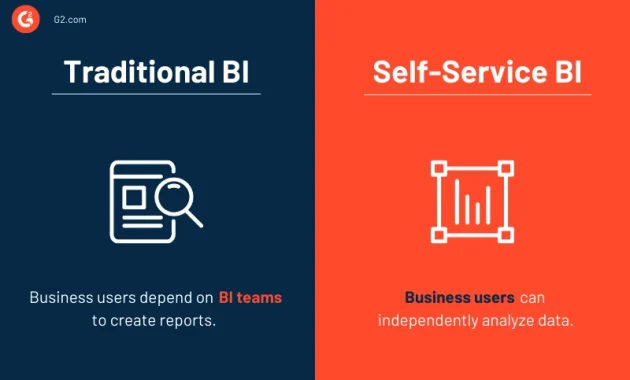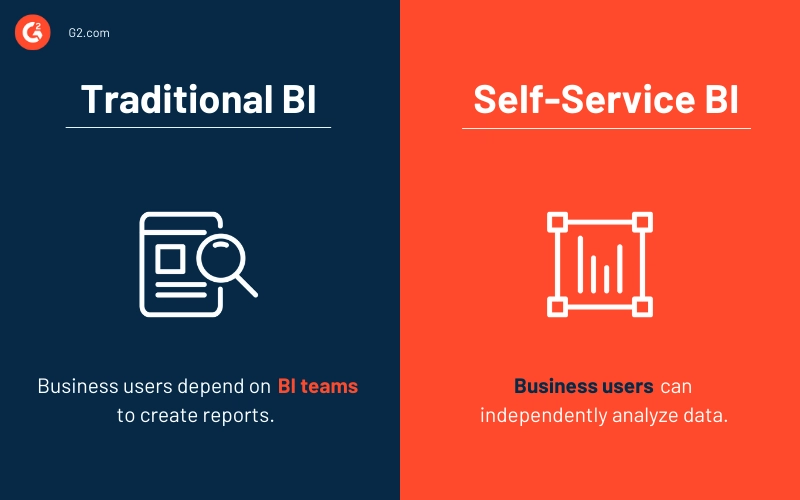
Predict Trends with Self-service Business Intelligence Software: A Data-Driven Revolution
In today’s fast-paced business environment, staying ahead of the curve is no longer a luxury; it’s a necessity. The ability to accurately predict trends is paramount for making informed decisions, optimizing strategies, and ultimately, driving success. This is where self-service business intelligence (BI) software steps in, empowering businesses to harness the power of data without relying solely on IT departments or specialized analysts. This article delves into the transformative potential of self-service BI software, exploring how it enables organizations to predict trends, make data-driven decisions, and gain a competitive edge.
The Rise of Data and the Need for Speed
The volume of data generated globally is exploding. Businesses are awash in information, from customer interactions and sales figures to market research and social media activity. However, raw data is useless. It needs to be analyzed and interpreted to provide actionable insights. Traditional BI solutions often involve complex processes, requiring significant technical expertise and time. This can lead to delays in accessing critical information, hindering agility and responsiveness.
Self-service BI software addresses this challenge by putting the power of data analysis directly into the hands of business users. This means that marketing teams, sales representatives, and even executives can access, analyze, and visualize data without needing to submit requests to IT departments or wait for reports from analysts. This democratization of data empowers users to quickly identify patterns, predict trends, and make informed decisions in real-time.
Key Features of Self-service BI Software
Self-service BI software offers a range of features designed to simplify data analysis and reporting. These features typically include:
- Data Integration: The ability to connect to various data sources, including databases, spreadsheets, cloud services, and more.
- Data Preparation: Tools for cleaning, transforming, and shaping data to ensure accuracy and consistency.
- Data Visualization: Interactive dashboards, charts, and graphs that allow users to easily visualize data and identify trends.
- Data Exploration: Features that enable users to drill down into data, explore different perspectives, and uncover hidden insights.
- Reporting and Dashboards: Customizable reports and dashboards that can be shared with colleagues and stakeholders.
- Advanced Analytics: Some solutions offer advanced analytics capabilities, such as predictive modeling and machine learning, to predict trends and forecast future outcomes.
How Self-service BI Software Helps Predict Trends
The core benefit of self-service BI software is its ability to facilitate trend prediction. By providing users with the tools to analyze data and identify patterns, these solutions empower businesses to anticipate future developments and make proactive decisions. Here’s how:
- Historical Data Analysis: Self-service BI software allows users to analyze historical data to identify past trends and patterns. This information provides a foundation for understanding current market dynamics and predicting future behavior.
- Identifying Key Performance Indicators (KPIs): Users can define and track key performance indicators (KPIs) relevant to their business goals. By monitoring these KPIs, they can identify early warning signs of emerging trends and adjust their strategies accordingly.
- Data Visualization: Interactive dashboards and visualizations make it easy to spot trends that might be missed in raw data. Charts and graphs provide a clear and concise view of the data, making it easier to identify patterns and predict trends.
- Predictive Analytics: Many self-service BI software solutions incorporate predictive analytics capabilities, such as regression analysis and time series forecasting. These tools allow users to build models that predict trends based on historical data and other relevant factors.
- Scenario Planning: Self-service BI software enables users to create different scenarios and assess their potential impact on business outcomes. This helps businesses prepare for various possibilities and make more informed decisions.
Real-World Examples of Trend Prediction
Businesses across various industries are leveraging self-service BI software to predict trends and gain a competitive advantage. Here are some examples:
- Retail: Retailers can analyze sales data to identify seasonal trends, predict demand for specific products, and optimize inventory management. They can also use data from loyalty programs to personalize marketing campaigns and predict trends in customer behavior.
- Healthcare: Healthcare providers can analyze patient data to identify trends in disease outbreaks, predict patient needs, and improve resource allocation.
- Marketing: Marketing teams can analyze website traffic, social media engagement, and customer feedback to identify emerging trends in consumer preferences and adjust their marketing strategies accordingly. They can use this information to predict trends in market demand and create targeted campaigns.
- Finance: Financial institutions can analyze market data to identify investment opportunities, predict market fluctuations, and manage risk.
- Manufacturing: Manufacturers can analyze production data to identify bottlenecks, optimize processes, and predict trends in supply chain disruptions.
Choosing the Right Self-service BI Software
Selecting the right self-service BI software is crucial for maximizing its benefits. Consider the following factors when evaluating different solutions:
- Ease of Use: The software should be user-friendly and intuitive, with a simple interface that allows users to easily access, analyze, and visualize data.
- Data Connectivity: The software should be able to connect to all relevant data sources.
- Data Preparation Capabilities: The software should provide robust data preparation tools to ensure data accuracy and consistency.
- Visualization Options: The software should offer a wide range of data visualization options, including charts, graphs, and dashboards.
- Advanced Analytics Features: Consider whether the software offers predictive analytics capabilities.
- Scalability: The software should be able to handle increasing data volumes.
- Security: The software should have robust security features to protect sensitive data.
- Cost: Evaluate the pricing models of different solutions and choose one that aligns with your budget.
The Future of Self-service BI and Trend Prediction
The future of self-service BI software is bright. As data volumes continue to grow and the need for real-time insights intensifies, these solutions will become increasingly important for businesses of all sizes. Advancements in artificial intelligence (AI) and machine learning (ML) will further enhance the capabilities of self-service BI software, making it easier to predict trends, automate analysis, and make data-driven decisions. The trend is clear: businesses that embrace self-service BI software and leverage its capabilities will be best positioned to succeed in the data-driven economy.
Key Takeaways
Self-service BI software is a powerful tool for businesses seeking to predict trends, make data-driven decisions, and gain a competitive edge. By empowering business users to access, analyze, and visualize data, these solutions eliminate the bottlenecks of traditional BI processes and enable organizations to respond quickly to changing market conditions. By understanding the key features, benefits, and considerations of self-service BI software, businesses can make informed decisions about which solution is right for them and unlock the full potential of their data. The ability to predict trends will be a critical differentiator for businesses in the years to come, and self-service BI software is the key to unlocking that potential.
[See also: The Role of Data Visualization in Business Strategy]
[See also: How to Choose the Right BI Tool for Your Business]
[See also: The Benefits of Data Democratization]

